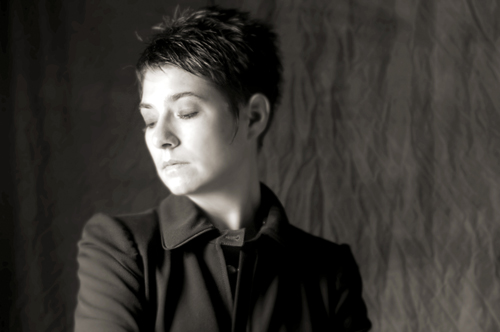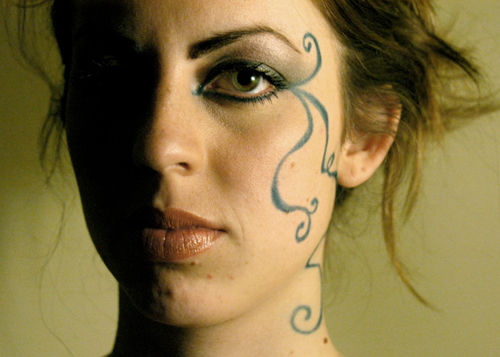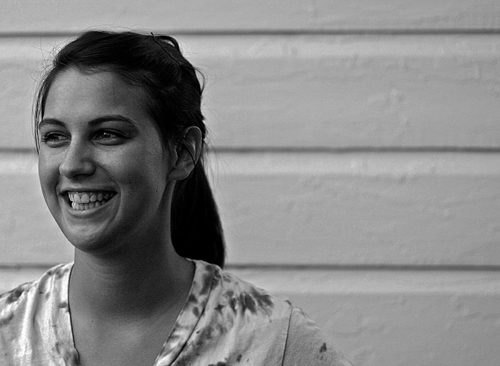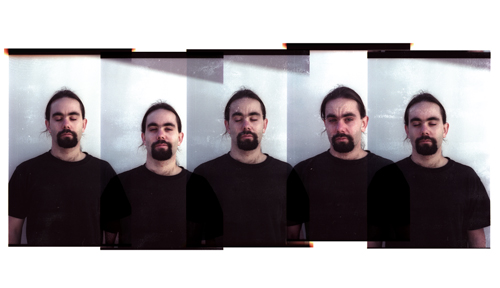A good portrait shows more than merely what someone looks like. It captures an expression, reveals a mood, or tells something about a person. Props, clothing, or a view into the subject’s environment are not essential, but they can help show what a person does and gives a hint about who the person is. A portrait attempts to express the character of a person and pin down the sitter in the hierarchy of their world, socially and physically, showing status, authority, and significance. A portrait offers into a person beyond the details of appearance, revealing unknown sides of his or her character or showing a fresh perspective on someone we know well.
Here are TEN THINGS TO KEEP IN MIND when shooting portraits:
1. Alter Your Perspective
Most portraits are taken with the camera at (or around) the eye level of the subject. While this is good common sense – completely changing the angle that you shoot from can give your portrait a more interesting factor. Get up high and shoot down on your subject or get as close to the ground as you can and shoot up. Either way you’ll be seeing your subject from an angle that is bound to create interest.
2. Play with Eye Contact
It is amazing how much the direction of your subject’s eyes can impact an image. Most portraits have the subject looking down the lens – something that can create a real sense of connection between a subject and those viewing the image. But there are a couple of other things to try:
A. Looking off camera – have your subject focus their attention on something unseen and outside the field of view of your camera. This can create a feeling of candidness and also create a little intrigue and interest as the viewer of the shot wonders what they are looking at. This intrigue is particularly drawn about when the subject is showing some kind of emotion (ie ‘what’s making them laugh?’ or ‘what is making them look surprised?’). Just be aware that when you have a subject looking out of frame that you can also draw the eye of the viewer of the shot to the edge of the image also – taking them away from the point of interest in your shot – the subject.
B. Looking within the frame – alternatively you could have your subject looking at something (or someone) within the frame. A child looking at a ball, a woman looking at her new baby, a man looking hungrily at a big plate of pasta…. When you give your subject something to look at that is inside the frame you create a second point of interest and a relationship between it and your primary subject. It also helps create ’story’ within the image.
3. Break the Rules of Composition
There is a lot of ‘rules’ out there when it comes to composition and it can be a love hate relationship with them. My theory is that while they are useful to know and employ that they are also useful to know so you can purposely break them – as this can lead to eye-catching results.
The Rule of Thirds is one that can be effective to break – placing your subject either dead center can sometimes create a powerful image – or even creative placement with your subject right on the edge of a shot can sometimes create interesting images.
4. Experiment with Lighting
Another element of randomness that you can introduce to your portraits is the way that you light them. There are almost unlimited possibilities when it comes to using light in portraits. Side lighting can create mood, backlighting and silhouetting your subject to hide their features can be powerful. Using techniques like slow synch flash can create an impressive wow factor.
5. Shoot Candidly
Sometimes posed shots can look somewhat…. posed. Some people don’t look good in a posed environment and so switching to a candid type approach can work. Photograph your subject at work, with family or doing something that they love.
6. Introduce a Prop
Add a prop of some kind into your shots and you create another point of interest that can enhance your shot. Yes you might run the risk of taking too much focus away from your main subject but you could also really add a sense of story and place to the image that takes it in a new direction and gives the person you’re photographing an extra layer of depth that they wouldn’t have had without the prop.
7. Focus Upon One Body Part – Get Close Up
Get a lens with a long focal length (telephoto) – or get right in close so that you can just photograph a part of your subject. Photographing a person’s hands, eyes, mouth or even just their lower body… can leave a lot to the imagination of the viewer of an image.
Sometimes it’s what is left out of an image that says more than what is included.
8. Obscure Part of your Subject
A variation on the idea of zooming in on one part of the body is to obscure parts of your portrait subject’s face or body. You can do this with clothing, objects, and their hands or just by framing part of them out of the image. Doing this means that you leave a little to the imagination of the image’s viewer but also focus their attention on parts of your subject that you want them to be focused upon.
9. Take a Series of Shots
Switch your camera into ‘burst’ or ‘continuous shooting’ mode and fire off more than one shot at a time. In doing this you create a series of images that could be presented together instead of just one static image. This technique can work very well when you’re photographing children – or really any active subject that is changing their position or pose in quick succession.
10. Have fun!
Sometimes we worry too much about taking photos, and we forget to enjoy the process of making images. So get out there, take great pictures and have a wonderful time!!









